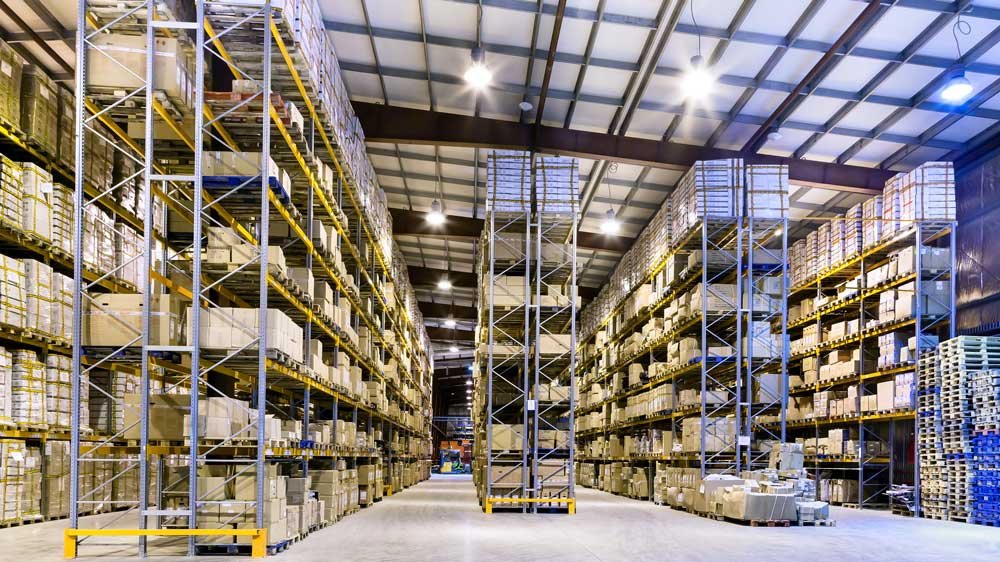A question we’ve been seeing a lot of lately is: what is the spacing between pallet racks in a 20-foot racking aisle? This question personally feels very good, because our warehouse in the planning of racks and racks between the spacing is a set of strict standards, which is related to the normal operation of our warehouse as well as the operation of the safety and other issues.
So let’s take “space between pallet racks for 20ft racks aisles” as the core of this topic to explore all about rack spacing!

How much space is needed between 20-foot shelving aisles?
Now let me start by answering the first question, the one we originally stated, and that is what is the pallet rack spacing between aisles of 20 foot racking?
Before answering this question, we need to know that when designing the spacing of pallet racks, the choice of aisle width needs to take into account a variety of factors, such as the type of equipment being used in the warehouse (e.g., forklifts), the size of the pallets, the efficiency of the operation, and the safety requirements.
For a 20-foot wide aisle, the distance between pallet racks will usually allow enough space for the equipment to operate safely and efficiently. Here are some of my recommendations:
Common Design Standards
- Standard Forklifts:
If using standard counterbalance forklifts or narrow aisle forklifts, a typical aisle width of 10-13 feet (approximately 3-4 meters) is required. This allows forklifts to easily enter and maneuver. - Very Narrow Aisle (VNA) Forklifts:
With VNA forklifts, aisle width can be reduced to 6-8 feet (approximately 1.8-2.4 meters). However, these systems require specialized rails or guidance systems.
Scenarios with 20-Foot Aisles
If the aisle width is 20 feet (approximately 6.1 meters), it is generally designed for two-way traffic or larger equipment. This means:
- Two forklifts can pass each other simultaneously, or a single forklift can make turning maneuvers.
- Larger pallet sizes or taller racks can be accommodated, making it suitable for high-density storage.
Spacing Calculation Formula
Aisle Width (20 feet) = Depth of racks on both sides + Operating equipment width + Safety clearance
For example:
Assume pallet rack depth is 48 inches (approximately 1.2 meters), forklift width is 40 inches (approximately 1 meter), and safety clearance is 2 feet (0.6 meters). The total spacing reserved for each side of the racks and forklift would be around 7-8 feet.
Recommended Spacing Between Standard Pallet Racks
The recommended spacing between standard pallet racks in a warehouse primarily depends on several key factors: the type of warehouse equipment, pallet dimensions, aisle purpose, and operational safety requirements. Based on these considerations, my recommendations for spacing are as follows:
Basic Spacing Categories
Main Aisle:
- Purpose: Designed for primary traffic flow, suitable for equipment turning or multiple operations simultaneously.
- Recommended Spacing: 12-20 feet (3.6-6.1 meters).
- Usage Scenarios: Forklift movement and turning, connection to loading/unloading zones.
Secondary Aisle:
- Purpose: For single equipment operations, such as picking or restocking.
- Recommended Spacing: 8-12 feet (2.4-3.6 meters).
- Usage Scenarios: Forklifts traveling in a straight line for picking tasks.
Very Narrow Aisle (VNA):
- Purpose: Utilizes specialized narrow aisle forklifts equipped with rails or guidance systems to maximize storage space.
- Recommended Spacing: 6-8 feet (1.8-2.4 meters).
- Usage Scenarios: High-density storage, often used in automated or high-rack warehouses.
Key Influencing Factors
- Forklift Type and Turning Radius:
- Larger equipment requires a wider turning radius and therefore greater spacing.
- Standard Counterbalance Forklift: 12-13 feet (3.6-4 meters).
- Narrow Aisle Forklift: 8-10 feet (2.4-3 meters).
- Diesel or Electric Reach Forklift: 13-15 feet (4-4.5 meters).
- Larger equipment requires a wider turning radius and therefore greater spacing.
- Pallet Dimensions:
- Standard Pallet (48″ x 40″): Typically requires at least 3-4 feet (0.9-1.2 meters) of additional clearance for maneuvering.
- Non-Standard Pallets: Adjustments are needed based on the pallet’s depth and width.
- Rack Height:
- Taller racks often require more operational space to ensure forklifts can safely lift and lower loads.
- Safety and Fire Regulations:
- Aisles must meet the minimum width requirements for fire equipment access, usually 10-12 feet.
Key Considerations for Planning Pallet Rack Spacing
In warehouse layout design, planning pallet rack spacing is a crucial step that requires balancing storage capacity, operational efficiency, and safety. Here are some important points to consider:
Equipment
- Forklift Type and Turning Radius
- Ensure rack spacing accommodates forklift turning and operational requirements.
- Counterbalance Forklifts: Typically require 12-14 feet (3.6-4.3 meters) of aisle width.
- Narrow Aisle Forklifts: Require only 6-8 feet (1.8-2.4 meters).
- Ensure rack spacing accommodates forklift turning and operational requirements.
- Fork Length
- Ensure the forklift can easily reach into racks to retrieve or place pallets. The fork length should match the pallet depth.
Pallets and Goods
- Pallet Dimensions
- Common standard pallet size: 48″ x 40″ (approximately 1.2m x 1m).
- Ensure spacing accommodates pallet size and provides sufficient clearance for operation.
- Cargo Shape and Weight
- Large or irregularly shaped goods may require wider operating aisles.
- Heavy goods may impose specific requirements on rack stability and equipment handling.
Safety Considerations
- Fire Safety Regulations
- Ensure aisle widths comply with local fire codes to allow smooth access for firefighting equipment.
- Pedestrian Safety
- Designate dedicated pedestrian walkways to avoid intersections with operational areas.
- Visibility and Operational Safety
- Avoid excessively narrow aisles that could obstruct visibility or increase collision risks.
Warehouse Layout
- Main and Secondary Aisles
- Main Aisles: Designed for traffic flow, typically 12-20 feet (3.6-6.1 meters) wide.
- Secondary Aisles: For equipment operations, usually 8-12 feet (2.4-3.6 meters) wide.
- Inbound and Outbound Flow
- Design efficient, unobstructed paths for goods from entry to storage, picking, and dispatch areas.
- Picking Efficiency
- Optimize rack and aisle layout based on SKU turnover rates to reduce picking time.
Storage Density and Efficiency
- Storage Density
- Narrower aisles increase storage density but may reduce operational efficiency. Balance is key.
- Automation Readiness
- Consider future integration of automated systems (e.g., AGVs or automated pallet movers), which often have specific aisle width requirements.
Other Considerations
- Rack Stability
- Ensure racks are securely installed, with sufficient spacing to prevent goods from falling or tilting.
- Environmental Factors
- In temperature-controlled environments like cold storage, design aisles for flexibility and ease of equipment operation.
- Periodic Review and Adjustment
- Regularly evaluate and adjust rack spacing based on warehouse usage to optimize space and ease operations.
Conclusion
Do you have a clear answer about the spacing between pallet racking? If you have more needs or questions about racking or warehousing, you are welcome to contact us!
Finally, we hope that our content can help you, and hope that you can have a good day!

